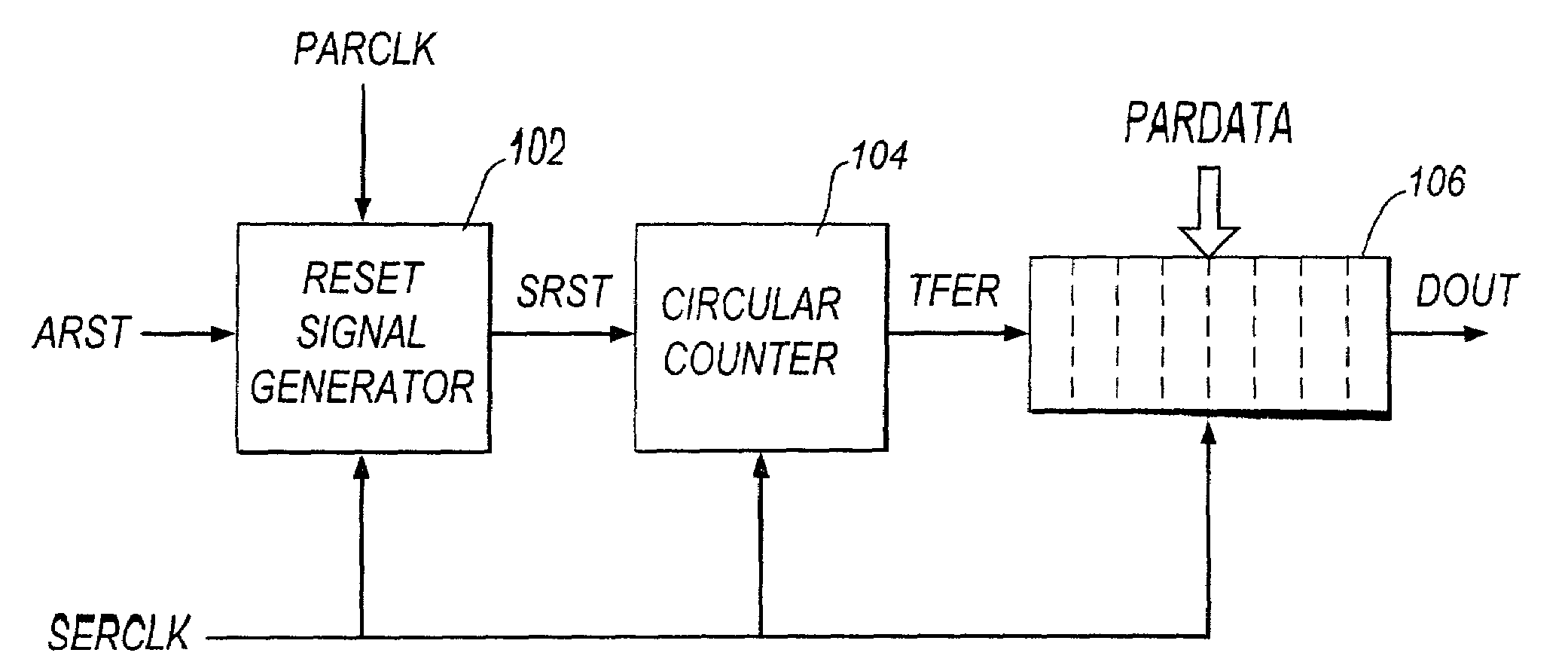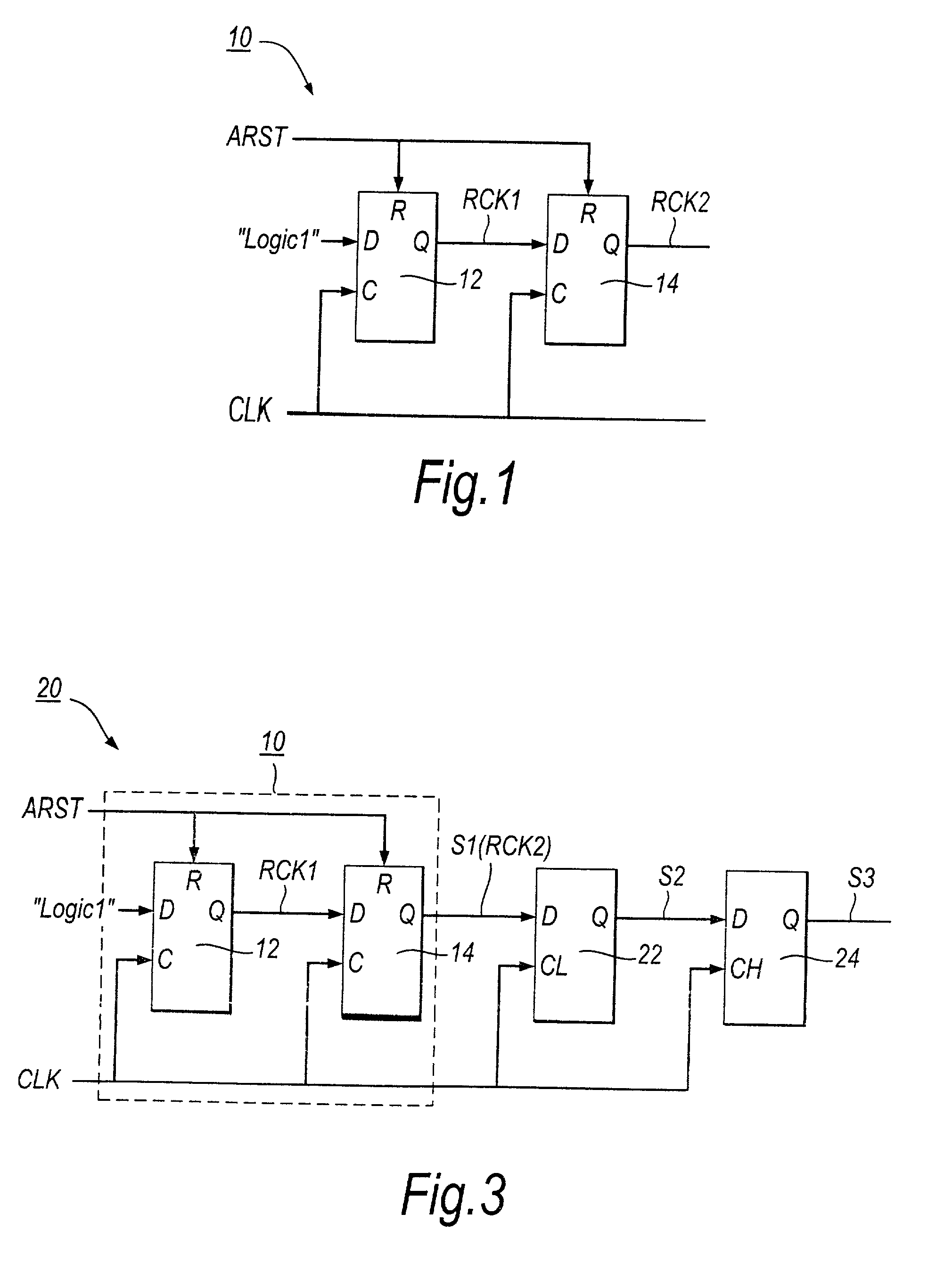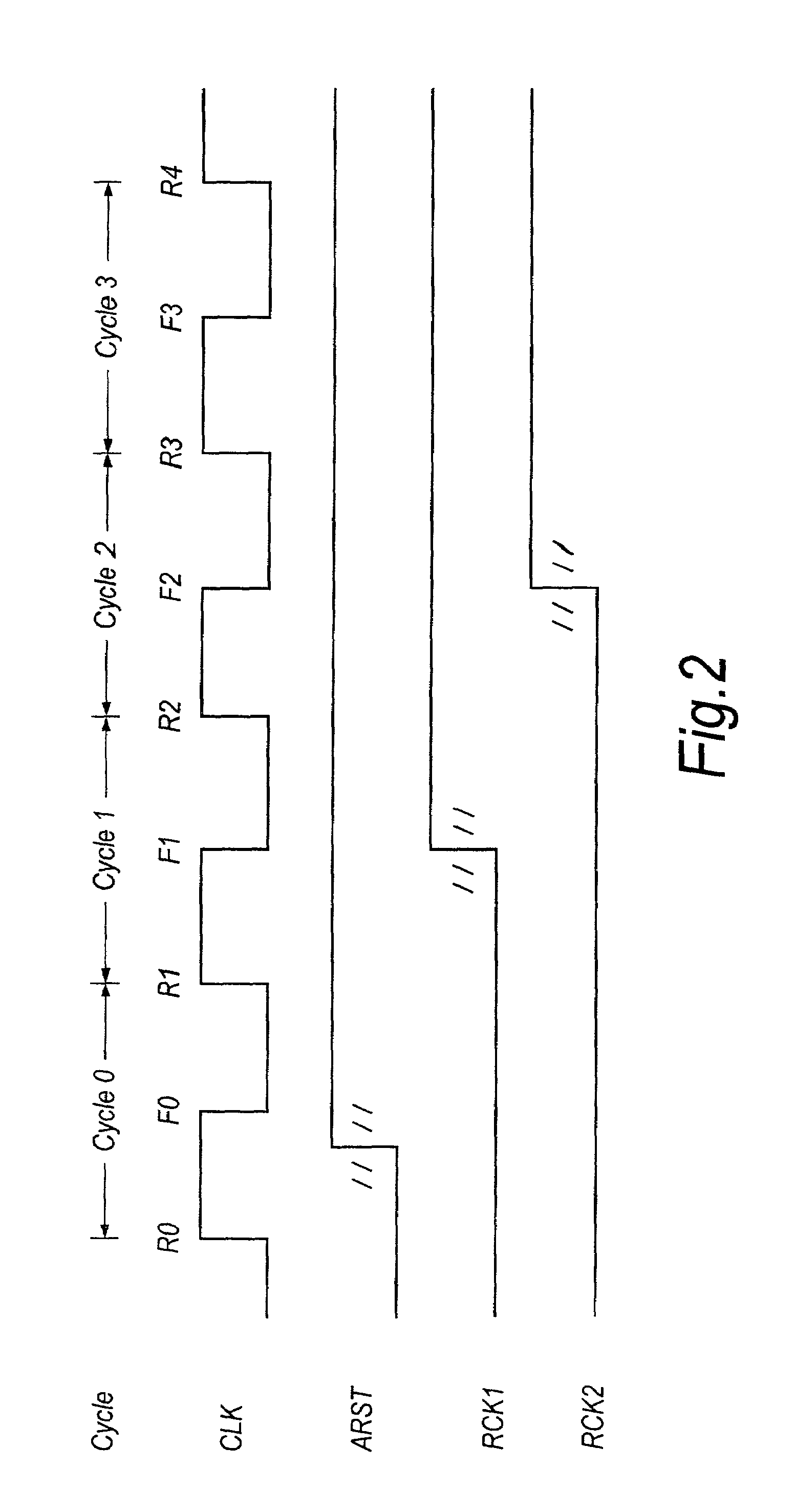Processing high-speed digital signals
a digital signal and high-speed technology, applied in the direction of synchronising signal speed/phase control, generating/distributing signals, baseband system details, etc., can solve the problems of inability to guarantee, the above-mentioned data sample processing is also problematic at very high clock frequencies, and the enabling of different latches is no longer performed correctly
- Summary
- Abstract
- Description
- Claims
- Application Information
AI Technical Summary
Benefits of technology
Problems solved by technology
Method used
Image
Examples
Embodiment Construction
[0058]Before describing a preferred embodiment of the invention signal generating circuitry previously considered for use in clock recovery circuitry will be described with reference to FIGS. 1 and 2.
[0059]The previously-considered signal generating circuitry 10 shown in FIG. 1 comprises a first latch element 12 and a second latch element 14. Each of the latch elements 12 and 14 is, for example, a positive-edge-triggered master / slave D-type latch element.
[0060]Each of the latch elements 12 and 14 has a clock input C which is connected to receive a clock signal CLK. Each latch element 12 and 14 also has a reset input R which is connected to receive an active-low asynchronous reset signal ARST. The reset signal ARST is asynchronous with respect to the clock signal CLK. The first latch element 12 has a data input D which is connected to be at the high logic level H (logic 1). The second latch element 14 has a data input D connected to a data output Q of the first latch element 12 for r...
PUM
 Login to View More
Login to View More Abstract
Description
Claims
Application Information
 Login to View More
Login to View More - R&D
- Intellectual Property
- Life Sciences
- Materials
- Tech Scout
- Unparalleled Data Quality
- Higher Quality Content
- 60% Fewer Hallucinations
Browse by: Latest US Patents, China's latest patents, Technical Efficacy Thesaurus, Application Domain, Technology Topic, Popular Technical Reports.
© 2025 PatSnap. All rights reserved.Legal|Privacy policy|Modern Slavery Act Transparency Statement|Sitemap|About US| Contact US: help@patsnap.com



